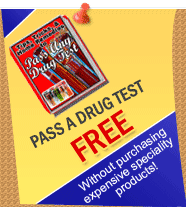Drug Testing Information
Drug testing is a laboratory examination of human fluids not limited to, but ranging from blood, sweat, urine, and semen, as well as oral fluid such as saliva.
The analysis of these samples are used specifically to detect the presence of certain specified drugs or left over metabolized traces that will appear as a result of the use of drugs.
Detection times vary greatly depending on the type of sample. For example, the most accurate method for immediate detection of drug use is the blood test. Detection of drugs in any other sample besides a blood sample will not provide accurate detail on whether or not you are currently under the influence of drugs.
Drug Detection Times
Below, we at asmartsource.com will provide you with an informative resource for all your drug test questions starting with detection times and ending with what ways you would possibly have a false positive result.
Approximate Detection Times in Urine
- Alcohol 1-2 days
- Amphetamines (crystal, Ice, crank, methamphetamines) 5-7 days
- Barbituates Short-Acting (ie. secobarbital) 1-2 days
- Barbituates Long-Acting (ie. phenobarbital) 2-3 weeks
- Benzodiazepines (Librium®,Valium®,Serax,Xanax®) 2-30 days
- Cannabinoids (THC,Marijuana) 20-90 days
- Clenbuterol 2-4 days
- Cocaine (Crack) 3-5 days
- Codeine 2-5 days
- Euphorics (MDMA, Ecstasy) 3-7 days
- LSD 1-4 days
- Methadone 3-5 days
- Methaqualone (Quaalude) l-14 days
- Opiates (heroin, Vicode, morphine, codeine) 2-7 days
- Phencyclidine (PCP, Angel Dust) 1-30 days
- Phenobarbital 10-20 days
- Propoxyphene (Darvon) 1-3 days
- Psilocybin (mushrooms) 3-5
- Steroids (anabolic) oral 14 days
False Positive Results
There are a vast variety of ways one can receive false positive results. For one, false results can be attained by human error or sample contamination. There are also a number of controlled and uncontrolled substance that can cause a false positive result in a laboratory setting. Below is a list of substances that can cause false positives and should be avoided prior to submitting any sample for testing.
Antibiotics:
Penicillin and Tetracycline has been known to cause false positive results for heroin or cocaine rather than negative results.
Cold remedies, diet pills, hay fever remedies and pain relievers:
Decogestants and many diet pills can result in a false positive for amphetamine use. There are currently 300 over the counter drugs that can cause false positives on the EMIT or The Enzyme Multiplied Immunoassay Technique.
Dental/Medical treatments:
"Cain" based treatments, especially Novocaine, has been known to cause false positives for cocaine. Some legal products actually contain small amounts of illegal chemicals.
Ibuprofen:
Ibuprofen a common pain reliever found in household drugs such as Advil, can cause a false THC positive on the EMIT. This has been noted by most screeners and has been corrected by labs. But this provides us with a good example of how something seemingly as innocent as Advil can provide a person with a false positive.
Poppy seeds:
Although an extremely concentrated amount of poppy seeds are needed to obtain a false positive for opiate on the EMIT it is possible and those under a drug screening should take care to avoid foods consisting of poppy seeds.





